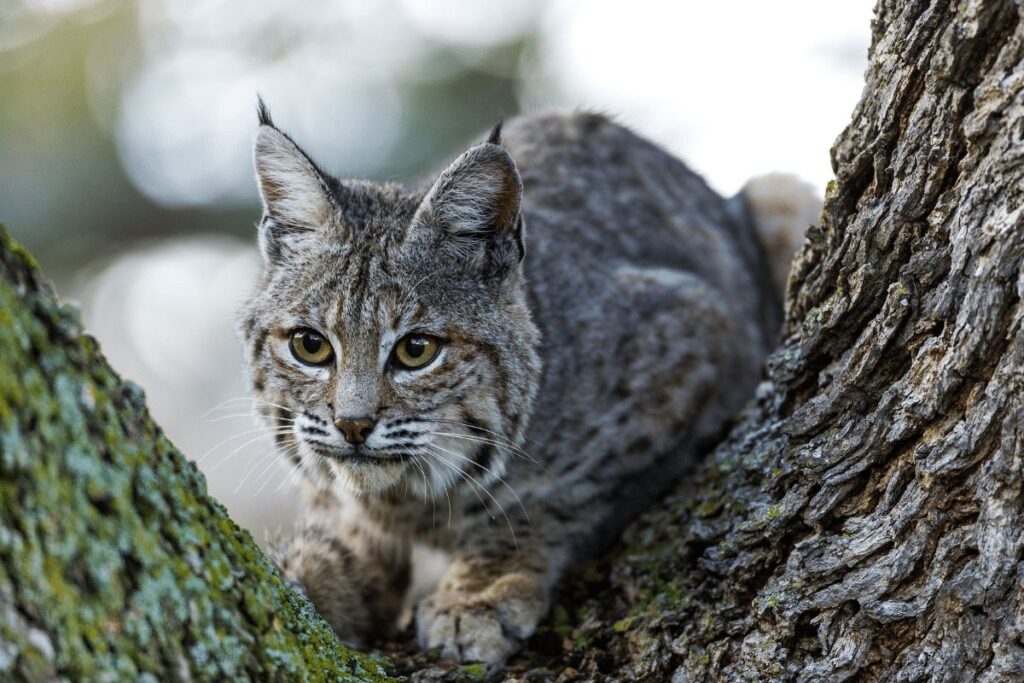Spot 15 wild animals in San Bernardino National Forest—camping trip insights and photos!
Ready for a game of wildlife bingo? We’re dishing out the ultimate guide to meeting the furry and feathered locals of San Bernardino National Forest!
Our camping escapade turned into a full-blown safari, and you bet we’re here to share the deets. Buckle up for a rollercoaster through the woods where we crossed paths with majestic eagles, stealthy bobcats, and a whole cast of wilderness celebrities.
Keep your eyes peeled, and let’s hit the trails of one of California’s most awe-inspiring natural havens. Adventure awaits, and who knows? You might just find your next favorite animal among the 15 we met!
Bobcats
We spotted bobcats during our camping trip in San Bernardino National Forest. They were mostly active at dawn and dusk, but we did see one during the day.
Bobcats are secretive and elusive, so it was a special treat to see them.
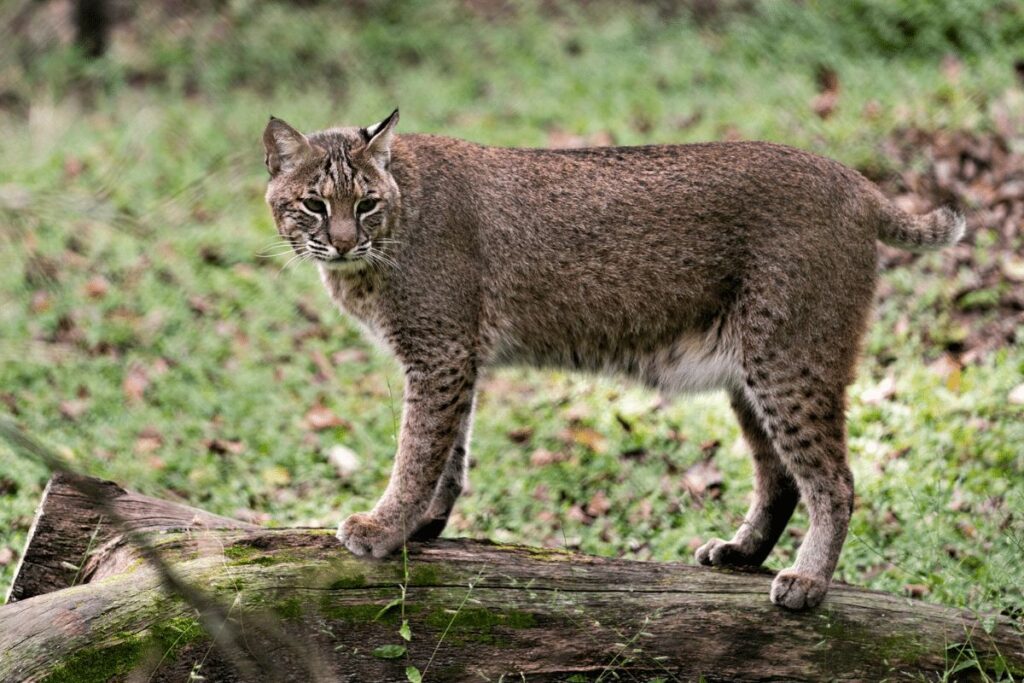
Bobcats are seen particularly on the north and west sides of the mountain range in the San Bernardino National Forest.
They inhabit a wide range of habitats, from wooded areas to rocky ones. Bobcats are carnivorous mammals that mainly eat small mammals, such as rabbits and mice, as well as birds and other small animals. They can also climb trees in pursuit of their prey.
Because bobcats generally avoid human contact, you should take precautions when camping in San Bernardino National Forest.
Make sure to store food securely so that bobcats cannot access it, and keep smaller pets close by your campsite at night.
Turkey Vulture
On our trip to San Bernardino National Forest, we spotted turkey vultures soaring overhead! This large bird of prey has a wingspan of up to six feet, and is easily recognizable by its bald head and dark body.
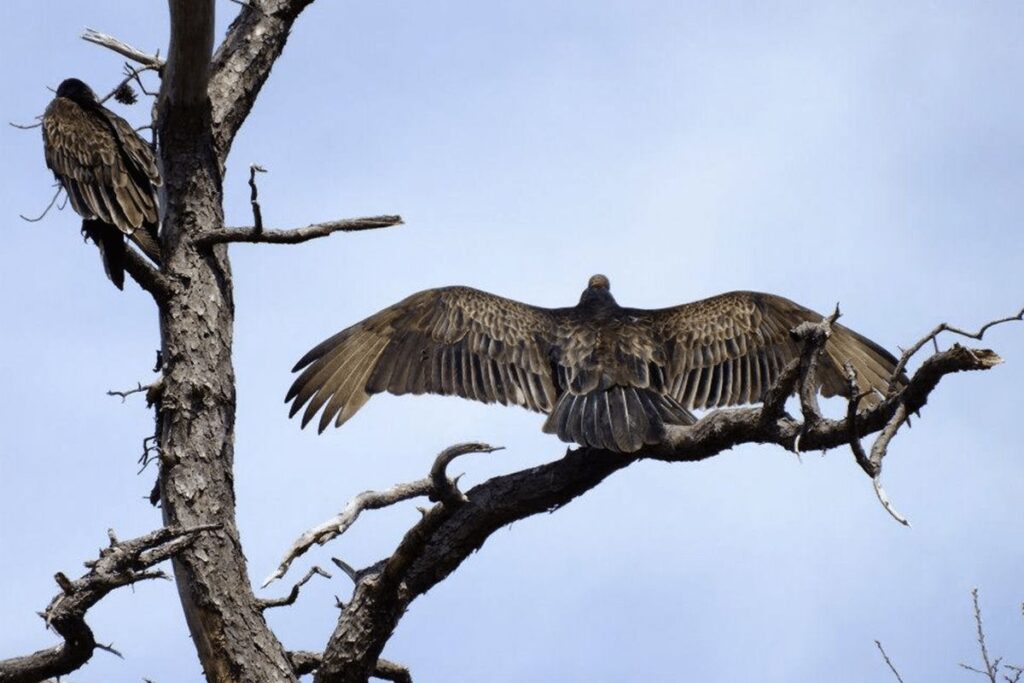
These birds are scavengers and often feed on carrion (dead animals). They are important members of the forest ecosystem, helping to keep it clean and free of disease.
With its diverse landscape of mountains, canyons, and lakes, this beautiful forest is the perfect habitat for these impressive birds.
Whether you’re exploring the rugged peaks or wandering through the scenic canyons, keep an eye out for these soaring scavengers. Just be sure to bring your binoculars and a sense of adventure!
Bighorn Sheep
Bighorn sheep are one of the most iconic animals in North America, and they can be found in the San Bernardino National Forest. These massive animals can weigh up to 600 pounds and stand six feet tall at the shoulder.
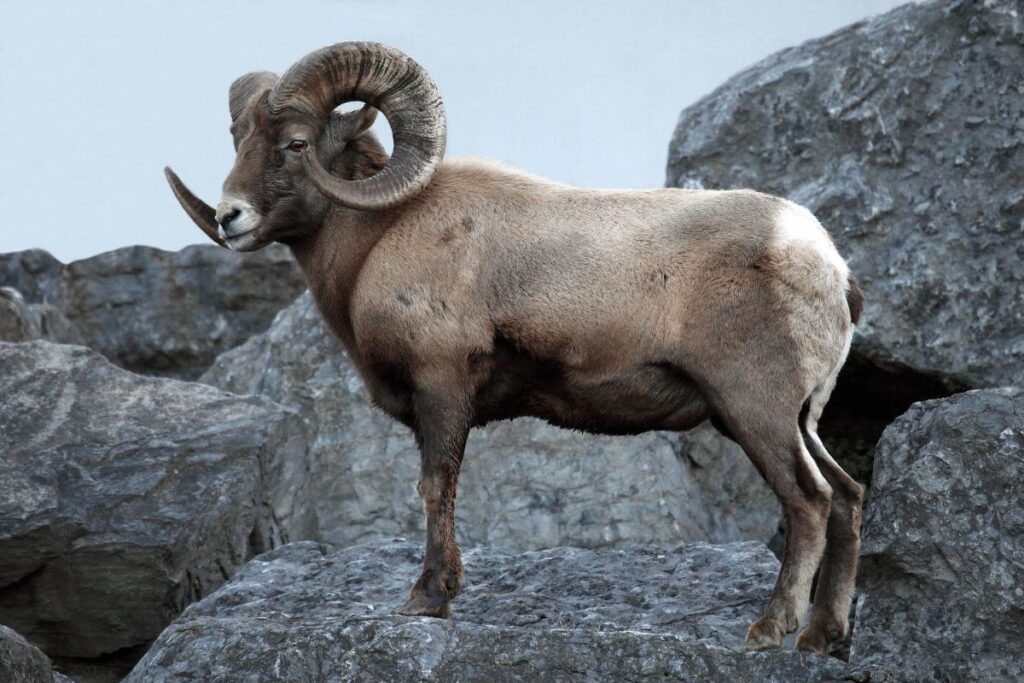
Their curved horns can grow up to three feet long, and they use them to defend themselves against predators and fight other males for mates.
Bighorn sheep are herbivores, and their diet consists mainly of grasses and herbs. During the winter months, when food is scarce, they will also eat twigs and bark.
Bighorn sheep are very agile, and they can climb steep slopes with ease. They live in herds of 10-50 individuals, with females and young males living in separate groups from the dominant male.
If you’re lucky enough to see a bighorn sheep in the wild, be sure to give it plenty of space. These animals are wild, and they can be dangerous if they feel threatened.
Mountain Quail
The first bird we spotted on our camping trip in San Bernardino National Forest was a mountain quail. This chicken-sized bird has a plump body and a short tail, and is greyish-brown with a white throat and belly.
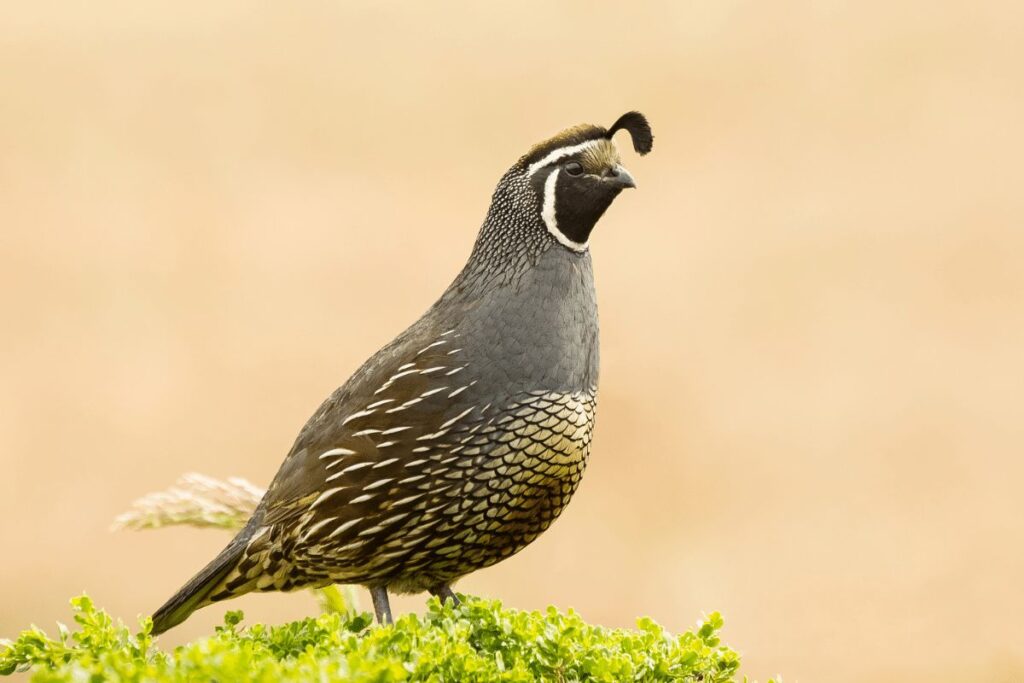
Male mountain quails have a black head with a white stripe down the middle, while females have a grey head. Both sexes have two white stripes on their wings. Mountain quails are shy birds that are most often heard before they are seen.
They make a distinctive “wet mew” sound, which is how we knew one was nearby even though we couldn’t see it at first. Mountain quails live in forests and brushy areas of the western United States, and can be found in mountains as high as 10,000 feet!
Mountain Lion
The mountain lion is the apex predator in the San Bernardino National Forest and can be a dangerous animal to encounter. We were lucky enough to spot a mountain lion on our camping trip and it was an amazing experience.
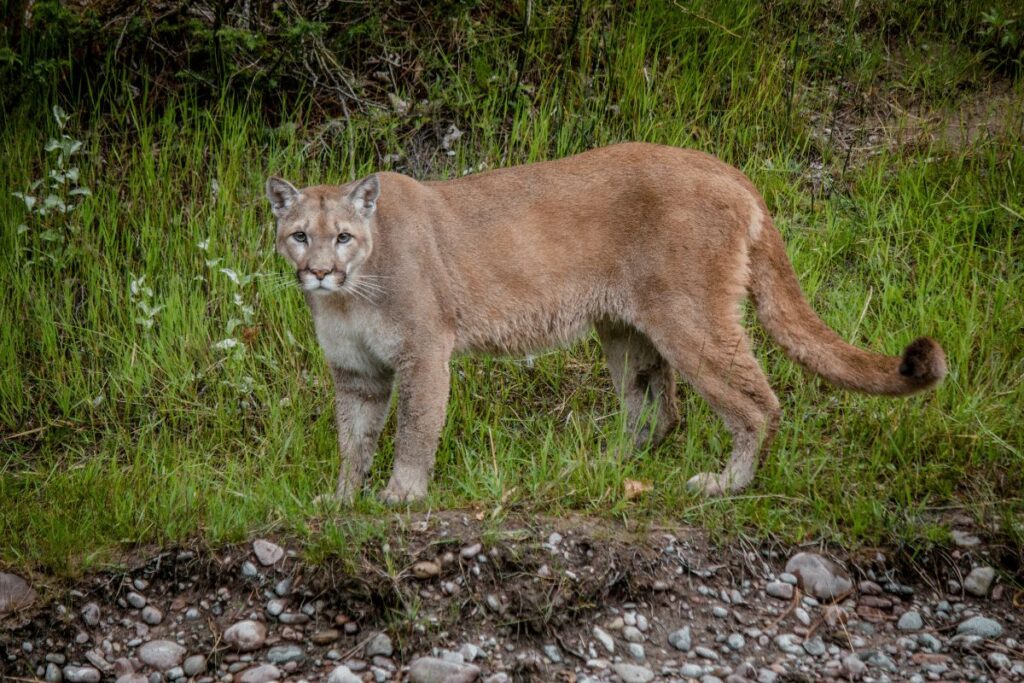
The mountain lion was stalking a deer, but when the deer ran away, the mountain lion just watched us for a few minutes before walking away. It was an incredible encounter with a beautiful animal.
Band Tailed Pigeon
The Band-tailed Pigeon is a medium-sized bird with a long slender neck and a small head.
The upper parts are mostly grey with a greenish tinge, while the underparts are paler grey. The wings are black with white bars, and the tail is black with a white band at the tip.
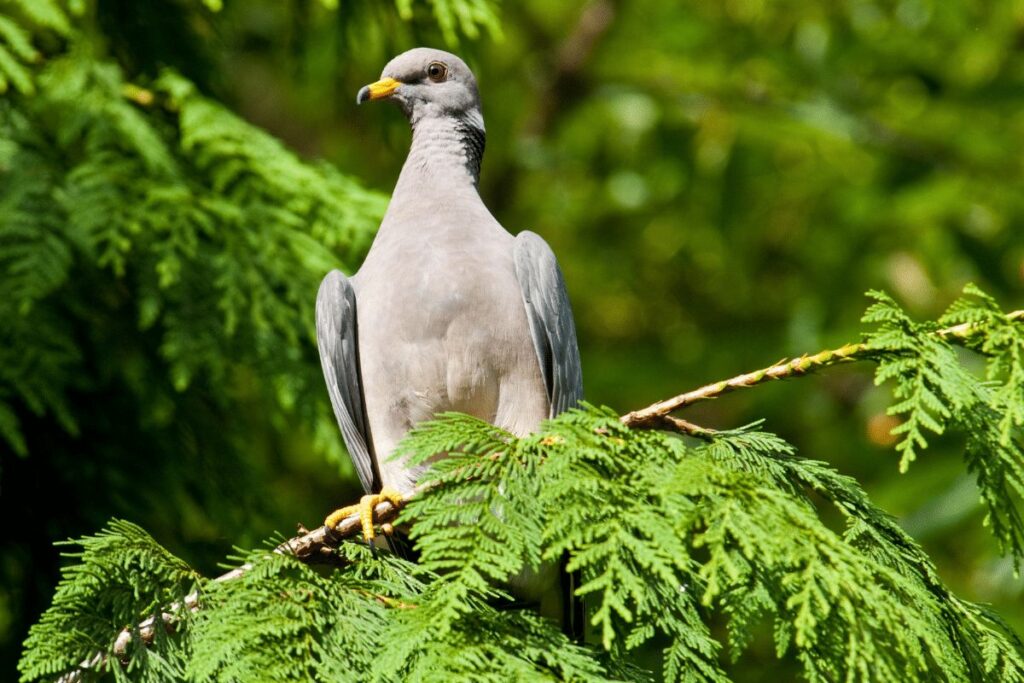
This pigeon is usually found in forests and woodlands, where it feeds on fruits, seeds, and insects.
We spotted this beautiful bird while we were hiking through the San Bernardino National Forest. It was a great sighting because we don’t often see Band-tailed Pigeons in our area!
Gray Fox
The gray fox is a species of fox found in North America. Its fur is mostly gray, but it can also be reddish-gray or yellowish-gray. It is the only species of fox that can climb trees.
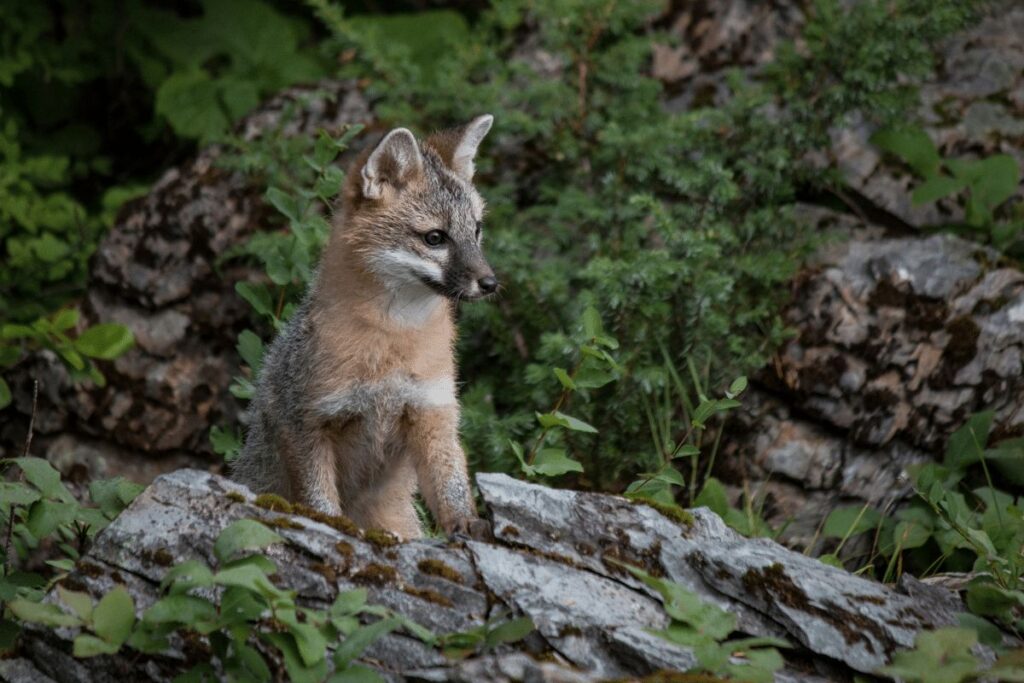
We spotted a gray fox on our camping trip in San Bernardino National Forest. It was a beautiful animal, and we were able to get a good look at it before it ran off into the woods.
Cooper’s Hawk
We spotted Cooper’s hawk while we were on our camping trip in San Bernardino National Forest. This hawk is a medium-sized bird of prey with a reddish brown back and barred white underside.
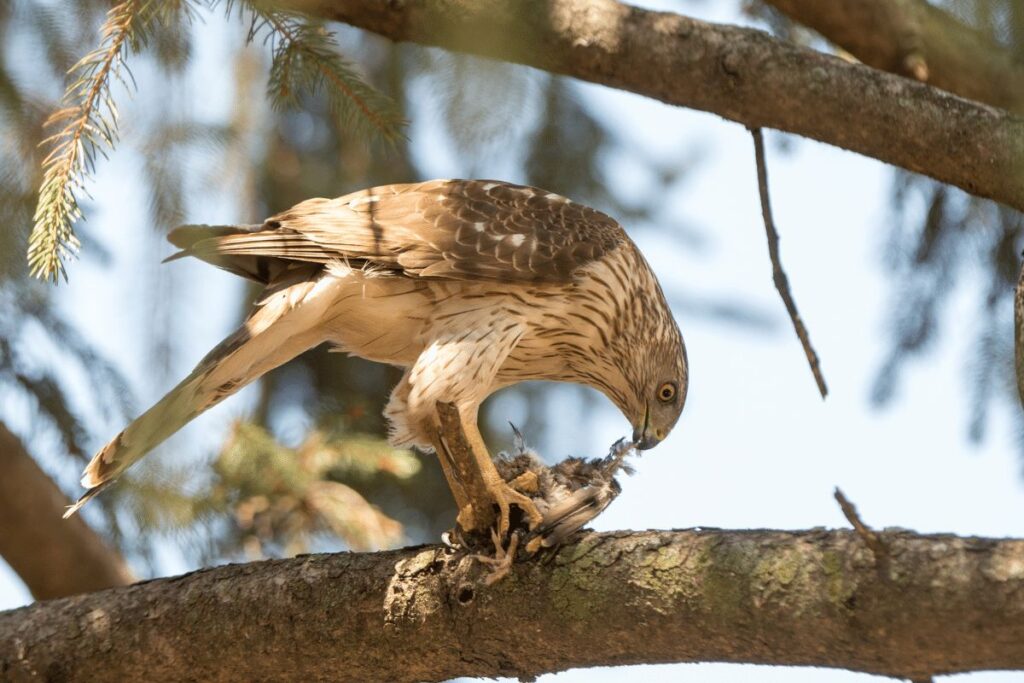
It has a hooked beak and talons, which it uses to kill small animals such as rodents and birds. We were able to get a good look at this hawk through our binoculars before it flew away.
Coyote
Coyotes are a common sight in San Bernardino National Forest. These intelligent and resourceful animals can be found throughout the forest, preying on small mammals and scavenging for food.
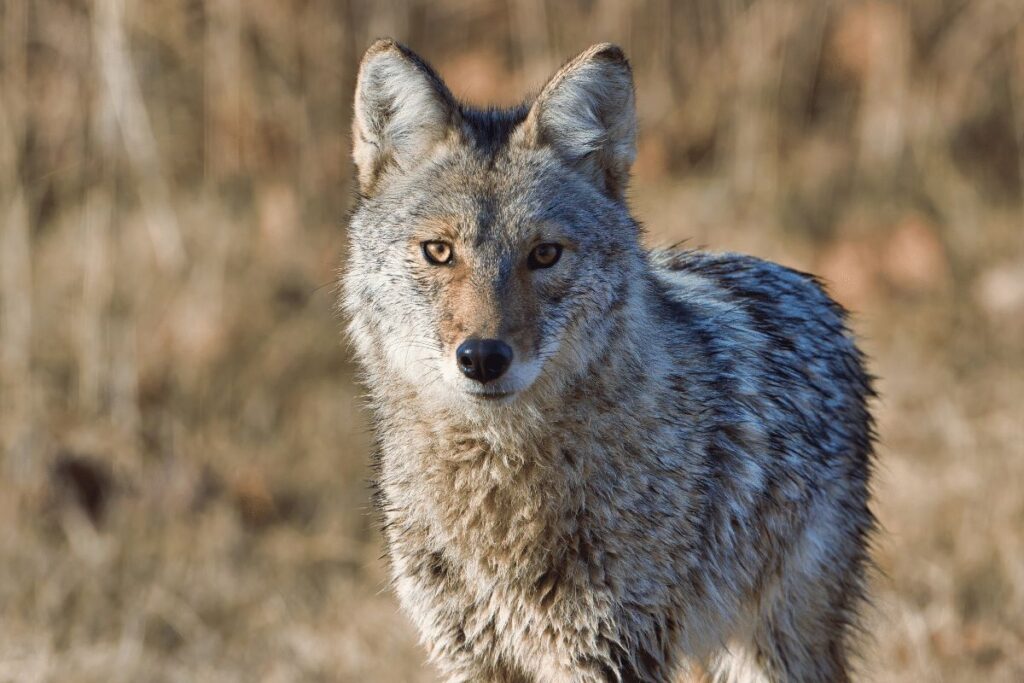
While they generally avoid humans, coyotes have been known to attack people if they feel threatened or cornered.
If you encounter a coyote while hiking or camping in the forest, make sure to give them plenty of space and do not try to approach them.
Western Bluebird
We spotted a beautiful Western Bluebird during our camping trip in San Bernardino National Forest. Here are some interesting facts about this bird:
The Western bluebird is a small songbird of the thrush family. It breeds in western North America from Alaska and Alberta to as far south as northern California and Colorado.
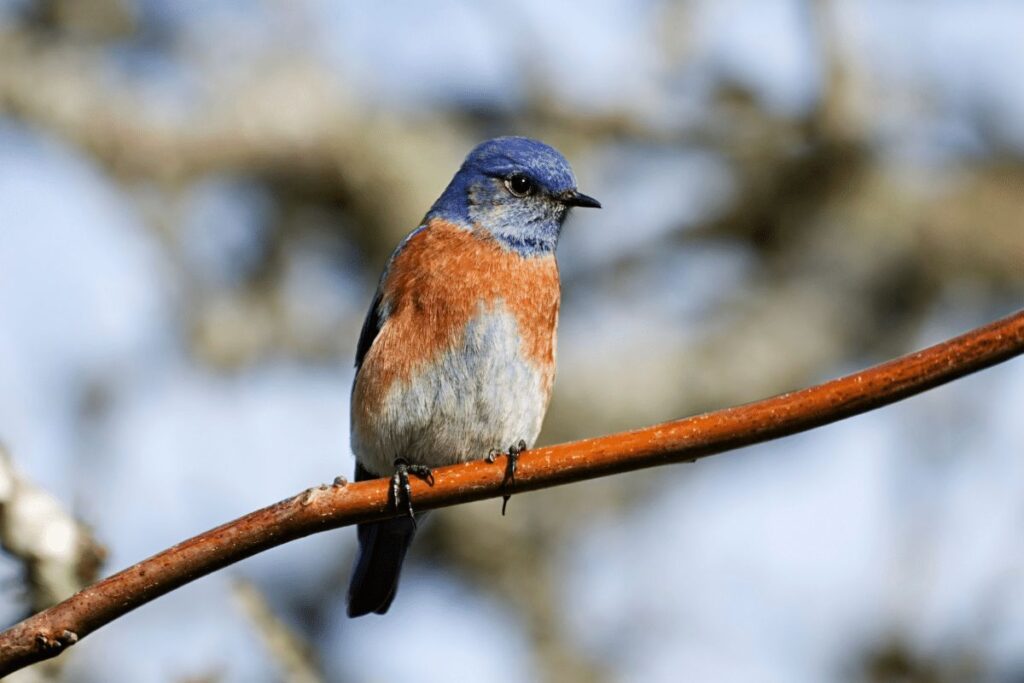
The adult male has periwinkle-blue upper parts, head, and throat, with dark eyes. The breast is lemon-yellow, and the belly and vent area are white with a hint of buff.
Females have similar plumage, but are overall paler blue and have duller yellow underparts. Juveniles have pale brown upper parts with buff-washed under tail coverts. All plumages show two white bars on the wings.
The Western Bluebird feeds mainly on insects, especially caterpillars, beetles and their larvae, flies, grasshoppers, crickets, ants and termites. It will also eat some berries during the winter months.
This bird nests in tree cavities or nest boxes placed near open areas of meadows or woods. It sometimes uses old woodpecker holes or abandoned swallow nests.
The female builds the nest out of grasses, bark strips, rootlets, plant down and feathers lined with hair or fine grasses; she incubates the 3–5 eggs for 13–17 days to hatching. Both parents feed the altricial chicks until they fledge at 18–
Mule Deer
Mule deer are a common sight in San Bernardino National Forest. We spotted several of them during our camping trip, usually early in the morning or late in the evening.
They are shy creatures but can be curious, which we discovered when one cautiously approached our campsite to check us out!
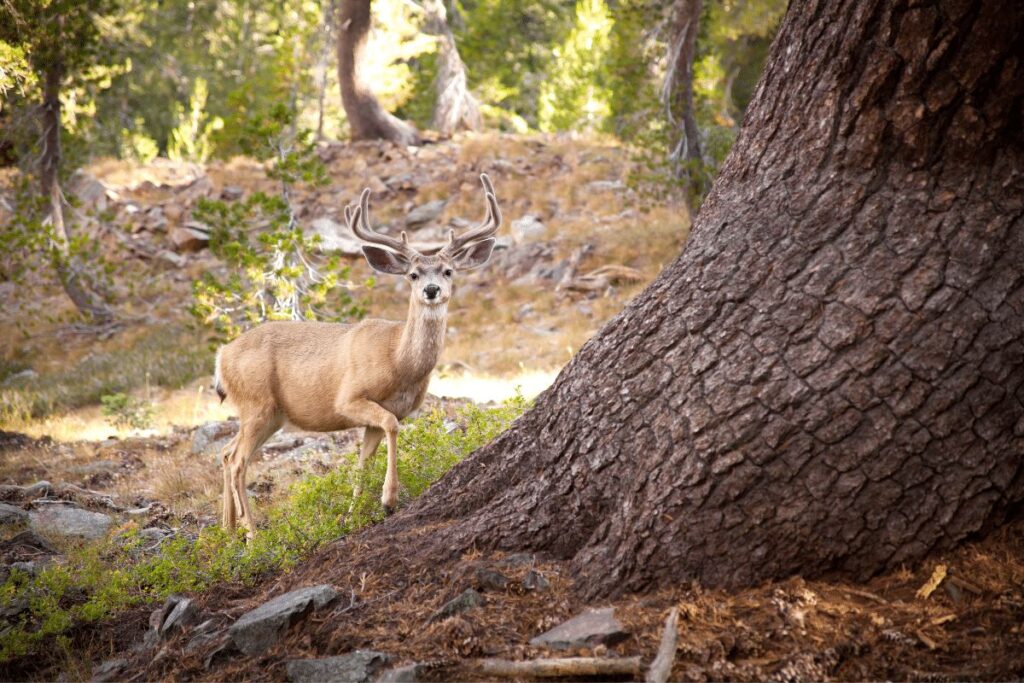
Mule deer are easily recognizable by their large ears, white-tailed rump patch, and mule-like face.
Males have antlers that are larger than those of similar species such as whitetail deer. They are most active during the fall and winter when they migrate to lower elevations in search of food.
They mostly feed on grasses, buds, leaves, and twigs from nearby trees and shrubs. They make great subjects for wildlife photography or viewing!
Raccoon
One of the most memorable moments from our camping trip in San Bernardino National Forest was spotting a raccoon!
It was early in the morning and we were just getting up to start our day when we saw it scurry across our campsite. We were so excited to see such a common animal in the wild!
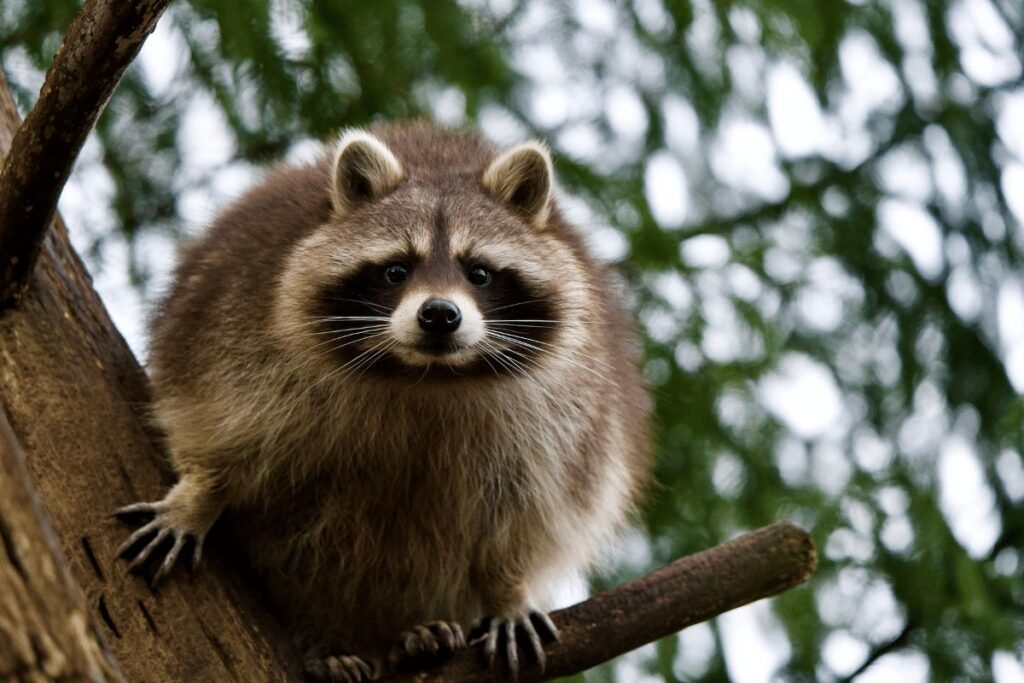
We quickly grabbed our cameras and started taking pictures. The raccoon was very curious and seemed to be posing for the camera. We were able to get some great shots before it wandered off into the woods.
This was a highlight of our trip and something we will always remember. It just goes to show that you never know what you might see when you’re spending time in nature!
Squirrel
We spotted several squirrels running around the campsite and into the woods. They were playful and seemed unafraid of us, which made for some great photo opportunities!
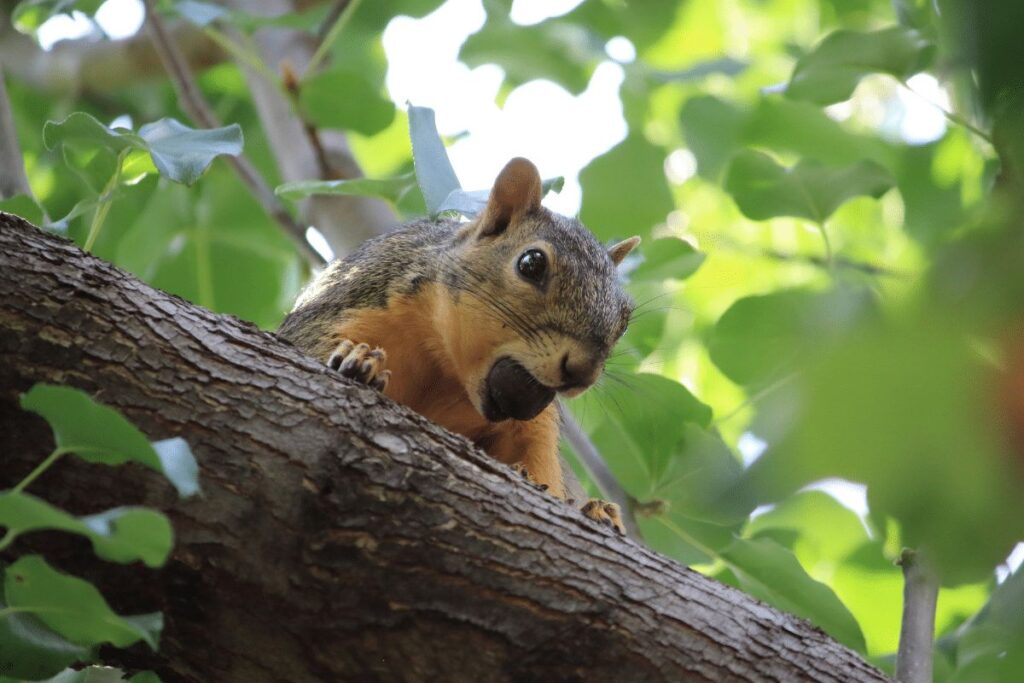
Squirrels are a common sight in San Bernardino National Forest, and visitors to the forest are likely to encounter these lively little creatures during their stay.
There are several species of squirrels that can be found in the forest, including the Western gray squirrel, the Douglas squirrel, and the California ground squirrel.
Mountain Chickadee
Mountain chickadees are small, sprightly birds known for their acrobatic abilities and cheerful “chick-a-dee” calls. They are not shy birds, and will often approach humans in search of a meal.
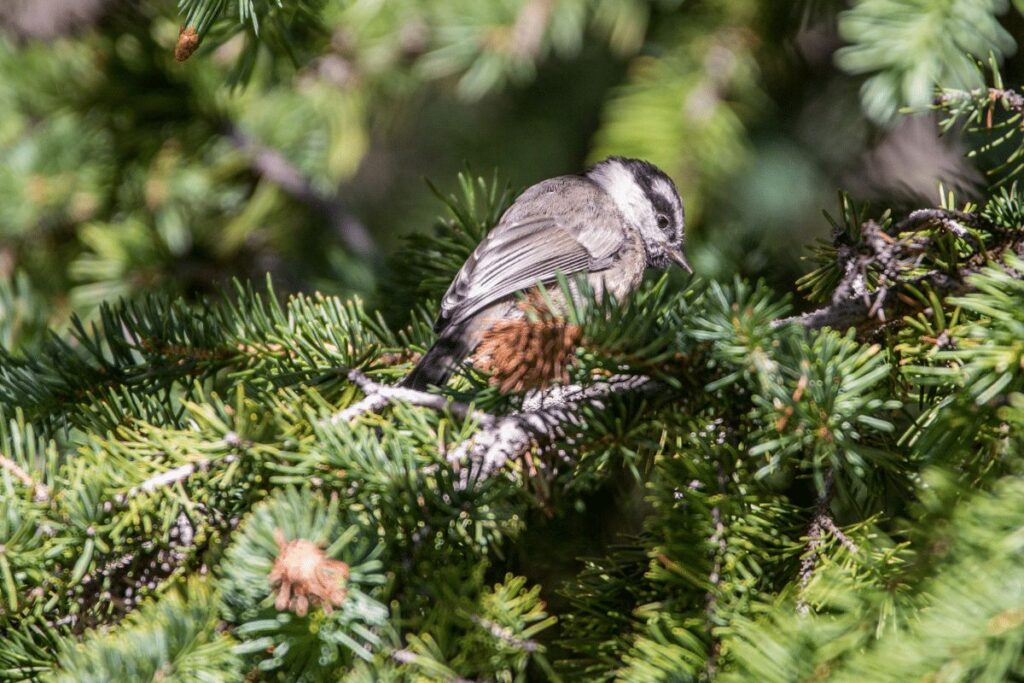
These little birds are common in forests and woodlands throughout North America. During our camping trip in San Bernardino National Forest, we spotted several mountain chickadees flitting about among the trees.
American Beaver
The American Beaver (Castor canadensis) is a North American beaver species that was once abundant in North America, but its population has declined due to overhunting and habitat loss.
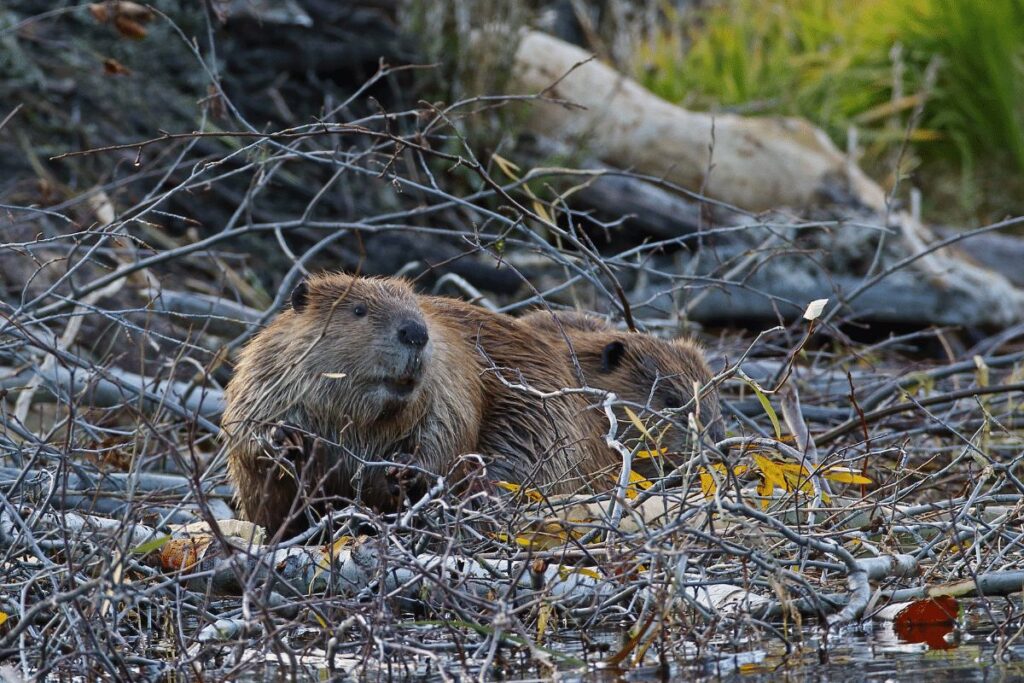
The American beaver is the largest rodent in North America and can weigh up to 60 pounds (27 kg).
It is a semi-aquatic creature that build dams and lodges in streams and rivers. The American beaver’s diet consists of leaves, bark, twigs, and aquatic plants.
The American beaver was an important animal to Native Americans and early European settlers in North America. The beaver’s fur was used to make clothing and hats. Beavers were also hunted for their meat.
The American beaver is still hunted today for its fur, although its population has declined significantly.
If you’re lucky enough to spot an American beaver while out camping or hiking, take a moment to appreciate this amazing creature!
Where we camped in the San Bernardino National Forest
Camping in San Bernardino National Forest is a truly unforgettable experience. Located in southern California, this sprawling forest covers more than 800,000 acres and is home to a wide variety of wildlife, including black bears, mountain lions, and bald eagles.
With numerous campgrounds and hiking trails to choose from, San Bernardino National Forest is a great destination for anyone looking to escape the hustle and bustle of city life and reconnect with nature.
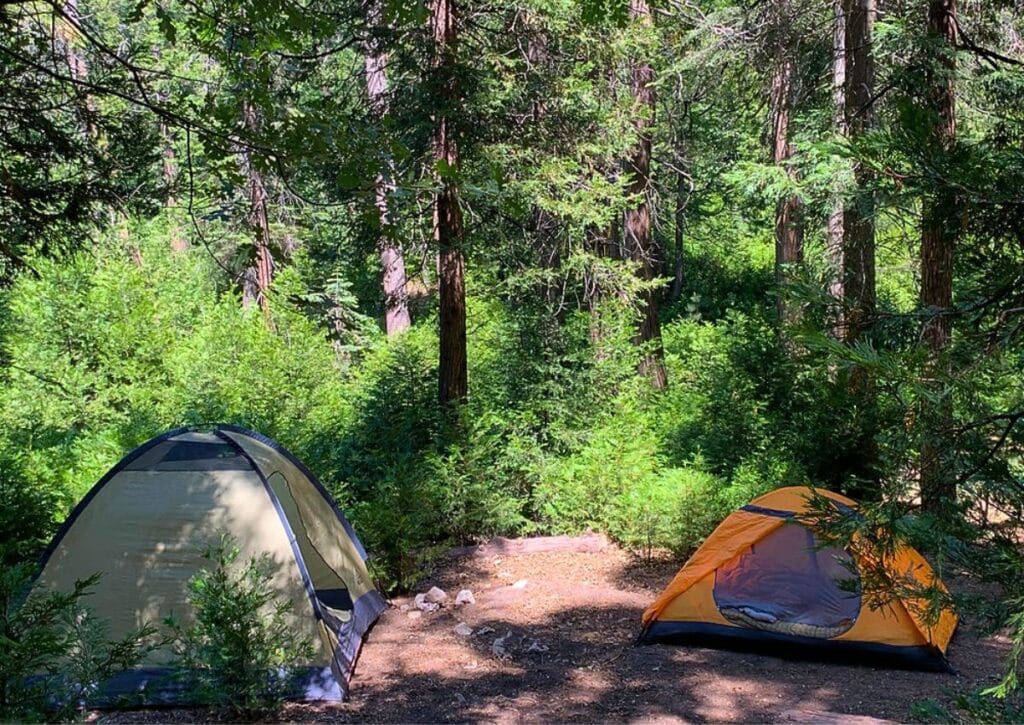
One of the most popular campgrounds in San Bernardino National Forest is Serrano Campground. Located near Big Bear Lake, Serrano Campground features more than 100 campsites, many of which offer stunning views of the lake and surrounding mountains.
Amenities include picnic tables, fire rings, and flush toilets, and the campground is conveniently located near a number of hiking and biking trails.
Another great option for camping in San Bernardino National Forest is Green Valley Campground. This small, secluded campground is nestled in a forested valley and features just 12 campsites, making it a perfect choice for those looking for a quiet and peaceful retreat.
The campground is located near a number of hiking trails, including the popular Pacific Crest Trail, and is just a short drive from Lake Arrowhead.
For those looking to get off the beaten path, San Bernardino National Forest also offers a number of primitive campsites that can only be reached by hiking or backpacking.
These campsites offer a truly immersive wilderness experience and are a great option for experienced campers who are comfortable with backcountry camping.
Preparation Before Going On Our Trip
Before going on any trip, especially one into nature, it is important to be prepared. This means packing the right supplies, researching the area, and being aware of any potential dangers.
When packing for our trip into San Bernardino National Forest, we made sure to bring plenty of food and water, as well as sunscreen and bug spray. We also packed our hiking boots and a map of the area.
Researching the area ahead of time is important for knowing what to expect and what to watch out for.
For example, we knew that there would likely be bears in the area, so we made sure to store all of our food properly. Additionally, we researched the best hiking trails and campsites in the area.
It is always important to be aware of potential dangers when going into nature. This includes being mindful of wildlife, weather conditions, and your own physical limitations.
By being prepared and informed, we were able to have a safe and enjoyable trip into San Bernardino National Forest.
What To Wear While Camping in the Forest
Assuming you will be spending most of your time during the day hiking around the forest, we would recommend clothing that is comfortable, breathable, and won’t make you too warm.
For bottoms, we recommend either shorts or lightweight pants. If you choose to wear shorts, be sure to apply sunscreen on your legs as they will be exposed to the sun.

It’s also a good idea to wear hiking boots or closed-toe shoes to protect your feet from any insects or plants.
As for tops, we recommend wearing a lightweight shirt or tank top. Again, if you choose a tank top, be sure to put sunscreen on your arms and shoulders. A hat is also a good idea to protect your face from the sun.
And finally, don’t forget to pack a light jacket or sweater for evenings when it can get cool.
Personal Reflections from Our Adventure
We had an incredible time camping in San Bernardino National Forest and spotted so many different types of birds and animals! We feel so lucky to have been able to see such beautiful creatures in their natural habitat.
We’ll never forget the sounds of the birds singing in the morning, or the majestic sight of an eagle soaring overhead.
This was an unforgettable experience and we can’t wait to share our stories with family and friends. We learned so much about nature and the importance of preserving our wildlife habitats.
We also enjoyed the peace and quiet that campgrounds provide — it felt like we were a million miles away from the noise of everyday life.
Whether it’s hiking, kayaking, camping, or fishing, San Bernardino National Forest is definitely a destination worth checking out for all its wonderful sights, sounds, and experiences.

